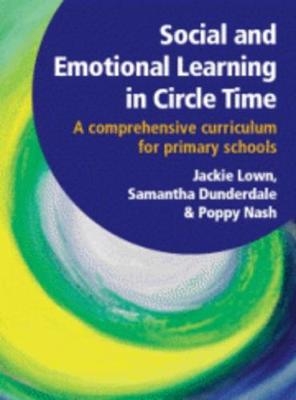
Social and Emotional Learning in Circle Time
Teach to Inspire (Verlag)
978-1-906517-23-6 (ISBN)
Summary of contents Social and Emotional Learning in Circle Time provides ten sessions per term of circle time for each class group in Key Stage 1 and 2. The sessions are planned to take between 45 and 60 minutes, but as teachers and teaching assistants become increasingly familiar with the circle time format and the materials provided, they will become able to judge how to extend and reduce activities in order to ensure that the coverage fits within the allotted time. Most of the circle time sessions follow the same format, with a few exceptions where content requires a different delivery. The format is as follows: * Learning intentions: written in 'child-friendly' language, to enable the children to quickly engage with the focus of the session to come. * Circle time agreements: a set of agreements decided by children for children to be adhered to every session. * Introductions: this denotes the starting point of the session. Introducing ones-self, or one another, is affirming for each individual, and is an important part of the session. * Mixer: 'mixers' address the fact that many children will choose to sit with their friends when circle time begins. Using a mixing game early in the session means that the children will be more likely to be sitting next to someone less familiar than their friends, in readiness for pair work. * Silent statements: 'silent statements' do not require children to speak and can act as an introduction to the focus of the topic for the session. * Sentence completion: this enables children to focus a response for themselves, while hearing others' views and practising speaking and listening skills. * Pair discussion: this is used regularly because it is an excellent way to give children the confidence to discuss issues in a pair, when they might not feel able to do so in a large group. * Physical games: for some children, sitting and talking for a long time means that they start to lose focus, and may become fidgety. Physical movement can serve to refocus children to the next activity by providing a break. * Self-esteem builder: the sessions for each year group carry some form of self-esteem builder (usually individually) and these are very important aspects of the circle time sessions. * Closure activity: included as a plenary and as a way to denote the end of circle time, whilst reflecting on the coverage of the session. Including detailed guidance on how to run effective circle time sessions.
| Zusatzinfo | line drawings |
|---|---|
| Verlagsort | London |
| Sprache | englisch |
| Maße | 210 x 297 mm |
| Gewicht | 2472 g |
| Themenwelt | Sozialwissenschaften ► Pädagogik ► Schulpädagogik / Grundschule |
| Sozialwissenschaften ► Pädagogik ► Sonder-, Heil- und Förderpädagogik | |
| ISBN-10 | 1-906517-23-1 / 1906517231 |
| ISBN-13 | 978-1-906517-23-6 / 9781906517236 |
| Zustand | Neuware |
| Haben Sie eine Frage zum Produkt? |